End of an Era: The ROKAF Bids Farewell to the F-4 Phantom
Report and photos by Peter van den Berg
June 30, 2024
After 55 years of loyal service with the Republic of Korea Air Force (Dae Han Min Guk Gong Gun), the F-4 Phantom bid farewell to the ROKAF. South Korea’s Phantoms, the last ones in Asia, became history as of June 7, 2024. I joined them for two days at Suwon AB as a large ceremony was held in honor of the retirement of this iconic fighter. Marking the end of an era, South Korea was one of only four countries still flying the classic F-4 Phantom together with Turkey, Greece and Iran.
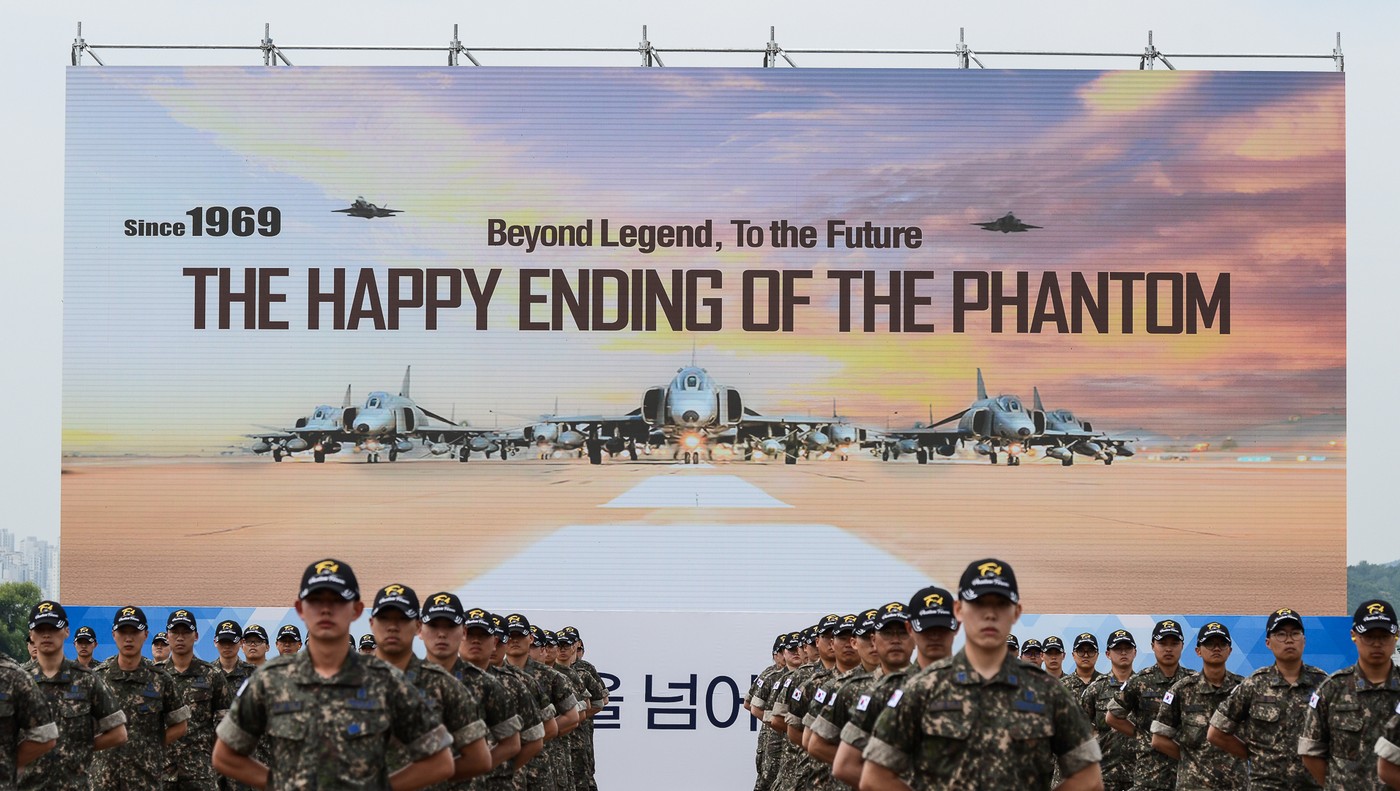
The two F-4Es of the 153 Fighter Squadron, part of the 10th Fighter Wing, flew their last official mission from Suwon AB on June 7, 2024 at 10:30 AM local time. The 78-739 sported a historical brown camouflage that the first Phantoms in South Korea flew with until 1980.

The 80-743 flew in a gray color scheme with the text “국민의 손길에서, 국민의 마음으로”, which translates to “From the hands of the people, to the hearts of the people.”

The Phantom fleet holds a special place in the hearts of South Koreans, as a significant portion of the funds for the first five aircraft of the ROKAF was raised through donations. In 1975, the Korean government collected over 5 million dollars (71 billion won) in donations as part of the National Defense Fund to acquire the initial batch of F-4D’s.
In honor of this, an F-4D with the inscription on the nose “방위성금헌납기 – Donation to the National Defense Foundation” was on display.
The “Spook”
Created by artist Anthony “Tony” Wong, the “Spook” is a globally renowned cartoon used by F-4 squadrons worldwide. The F-4 Phantom’s tilted horizontal stabilizers and rear radar warning receivers have the resemblance of a face and many variations of this character have been used as squadron mascots. During the final period of the ROKAF F-4, two new designs were introduced. 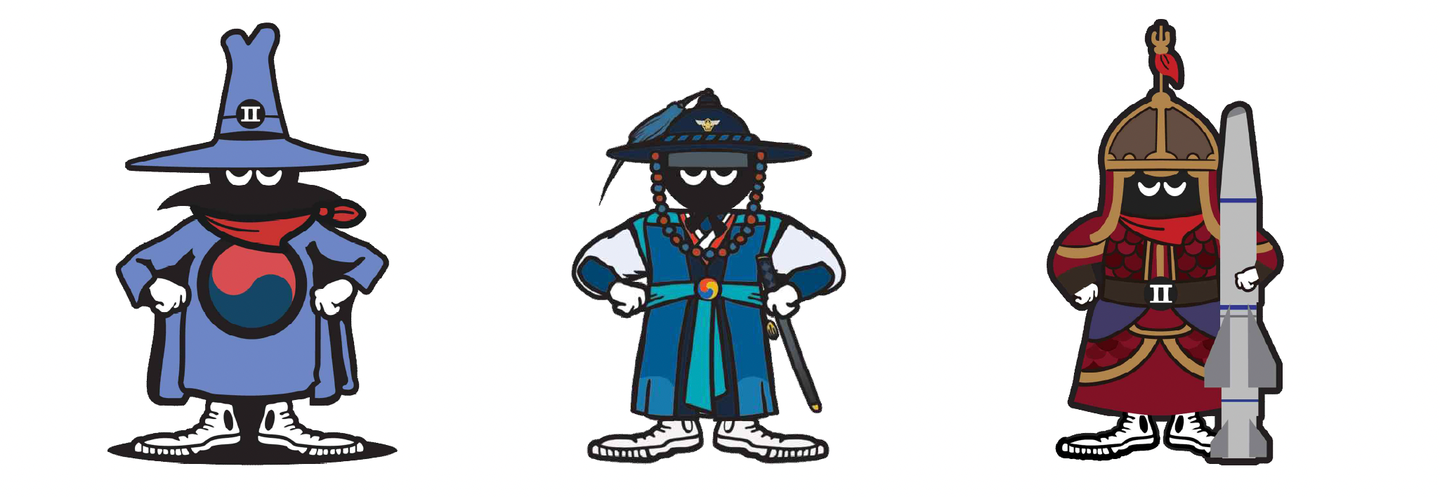
The trio of ‘Spooks’ created to commemorate the retirement of the F-4. From left to right: a figure wearing a traditional red Korean ‘Mahura’ scarf and a national shield, a figure dressed as a warrior from the Joseon Dynasty, and a figure wearing a traditional Korean warrior helmet and holding an AGM-142 Popeye missile. The latter specially created for this final farewell period, dressed in the traditional combat attire of a military officer from the Chosun Dynasty. The F-4E’s were the sole users of the AGM-142 missiles, and the remaining stock of ammunition was all expended before the aircraft retired.
In Korean service, the F-4 was nicknamed “Dokkaebi,” after a type of goblin from Korean mythology and folklore. The aforementioned Phantom “Spook” motif was also widely used.
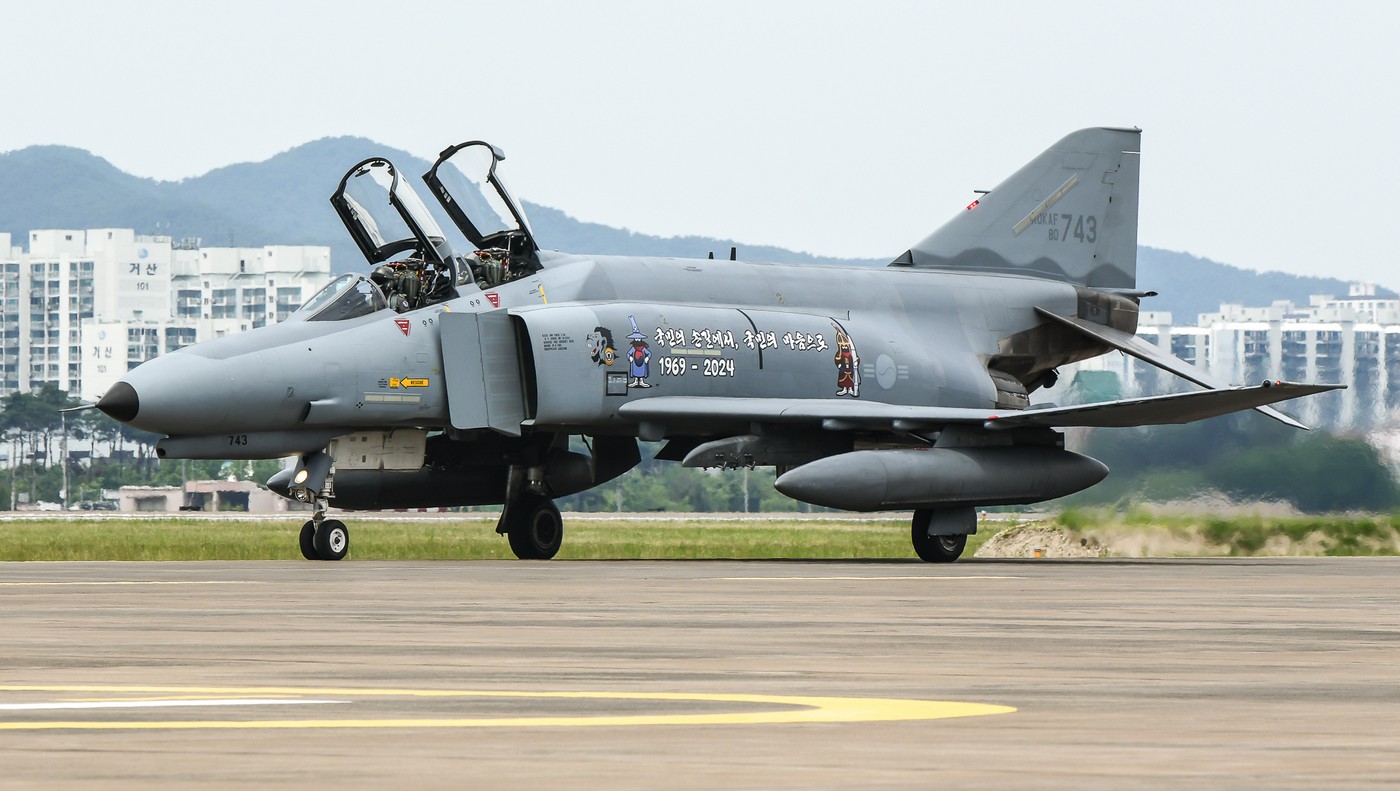
Final Flight
The decommissioning ceremony took place at Suwon Air Base, located in the northern province of Gyeonggi, and was led by South Korean Minister of National Defense Shin Won-sik. Amongst current F-4 crew, former pilots and maintenance personnel associated with the ROKAF’s F-4 were also attending. The ceremony included the honorable recognition of ROKAF Phantom crews who had lost their lives during their service on the F-4. Their names were solemnly read out one by one.

Having played a crucial role in defending the nation for 55 years, the Republic of Korea Air Force (ROKAF) formally retired the Cold War-era fighter jet by granting the Phantom an “honorable discharge”. Minister of National Defense Shin Won-sik mentioned in his speech: “The past 55 years with the Phantom have marked a history of victories for South Korea. The Phantom never dies; it only fades away.”
He issued the command for the final official flight of the F-4E: “Phantom Zero One you are requested to complete your final sortie and return. Phantom Zero One, take off”

After the final flight the two Phantoms taxied back to the ceremony site. The Minister of Defense placed congratulatory wreaths on the jets’ noses and inscribed the commemorative message on the fuselage of F-4E 80-743: “Beyond the legend, towards the future!”
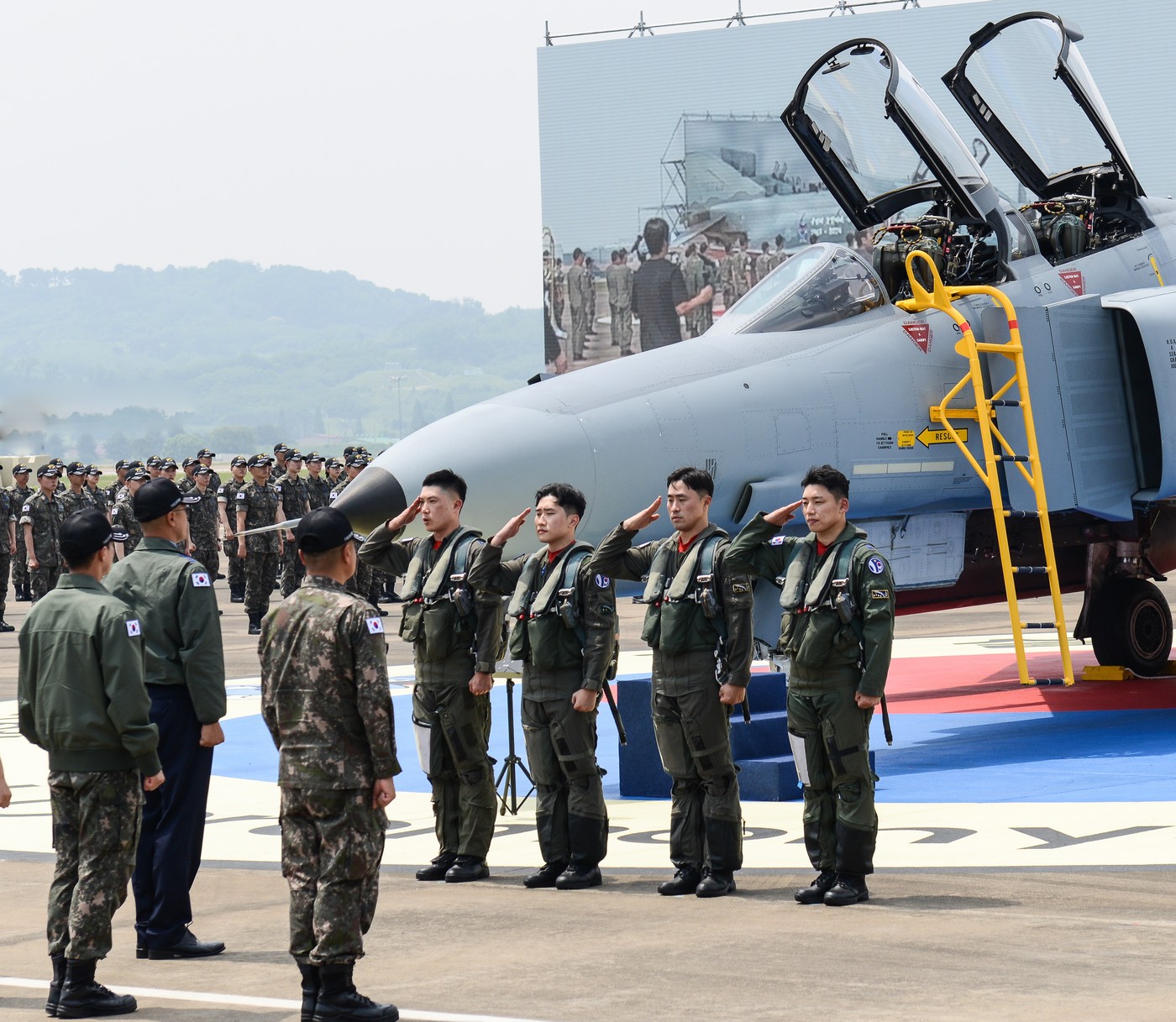
The last ROKAF F-4 crew
Fly-by ceremony
The ROKAF’s Black Eagles aerobatic team performed a demonstration with their T-50B Golden Eagles. We were then greeted by multiple ROKAF aircraft from various bases:
First, five F-16s launched a total of 55 flares in commemoration of the F-4’s 55-year service in South Korea since its introduction in 1969.
This was followed up by a formation flight was performed by six F-16s and five FA-50s. These six F-16s symbolized the initial introduction of the first six F-4Ds in 1969, while the FA-50s represented five additional F-4Ds funded by donations from South Korean citizens, forming the so-called ‘Pilseung Squadron.’
Following them, there was a fly-by of two reconnaissance RF-16s, taking over the mission from the RF-4C recce Phantom.
Next came a formation of F-15K Slam Eagles, F-35As, and F-16s stationed at air bases in Daegu, Cheongju, and Jungwon, from where the ROKAF’s F-4s used to operate.
Looking ahead and into the future was done by involving successors to the F-4 such as the F-35A stealth fighter. The air shows concluded with three F-35As, symbolizing the transition from the third-generation Phantom to the fifth-generation stealth fighters. Eventually, the Phantom will also be succeeded by the domestically developed KF-21.
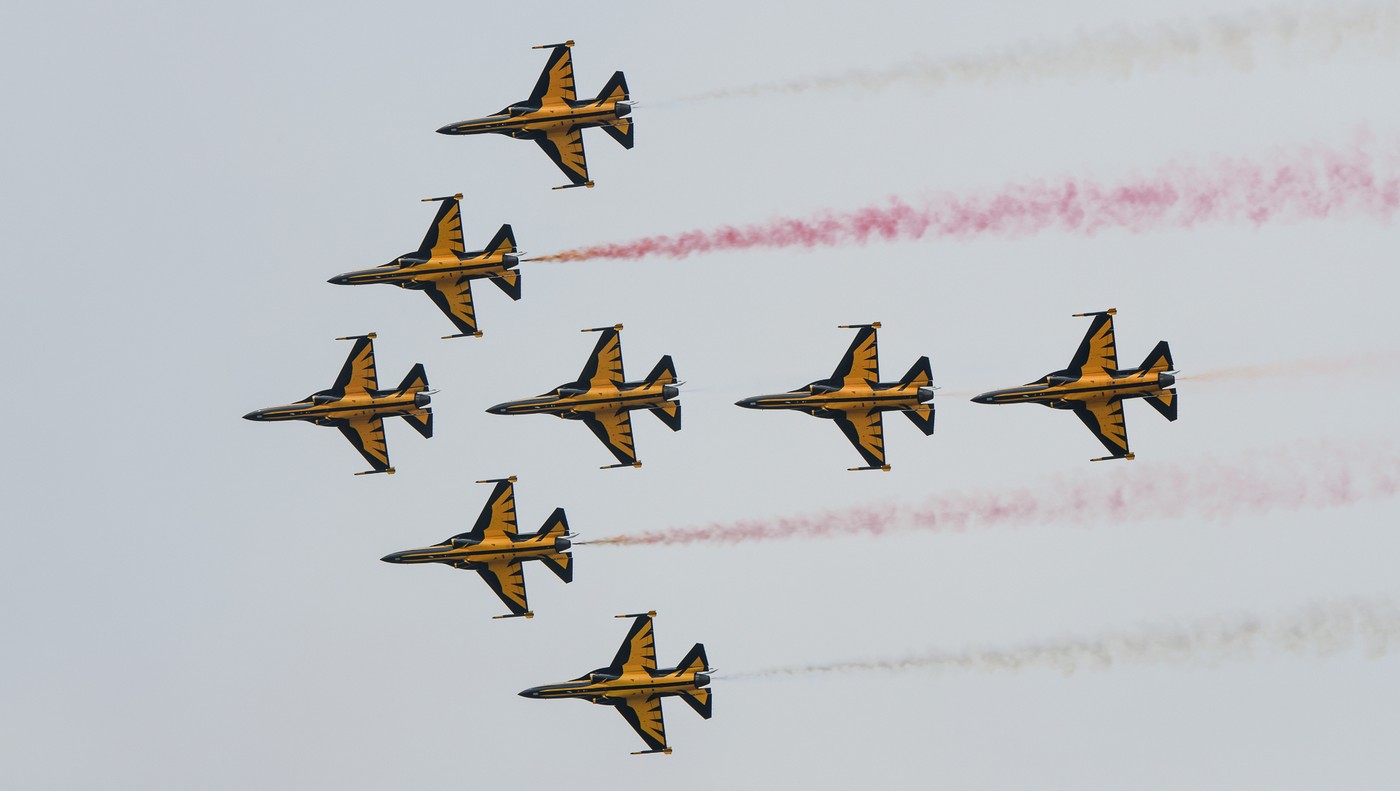
History
Over half a century ago, South Korea became the fourth country to acquire the Phantom (after the United States, the United Kingdom, and Iran). A total of 198 Phantoms served in South Korea with three different versions. Initially, the ROKAF received 83 ex-USAF F-4Ds, with the first arriving in 1969. Training for aircrews and maintenance personnel began in 1968 at Davis-Monthan Air Force Base, Arizona. The first six of these F-4Ds arrived at Daegu Air Base on August 29, 1969. Subsequently, 20 newer F-4Es were delivered in 1976, followed by an additional 18 in 1978. Over the years, the ROKAF received 19 RF-4Cs and 58 more F-4Es, bringing it to a fleet total of 198 aircraft.
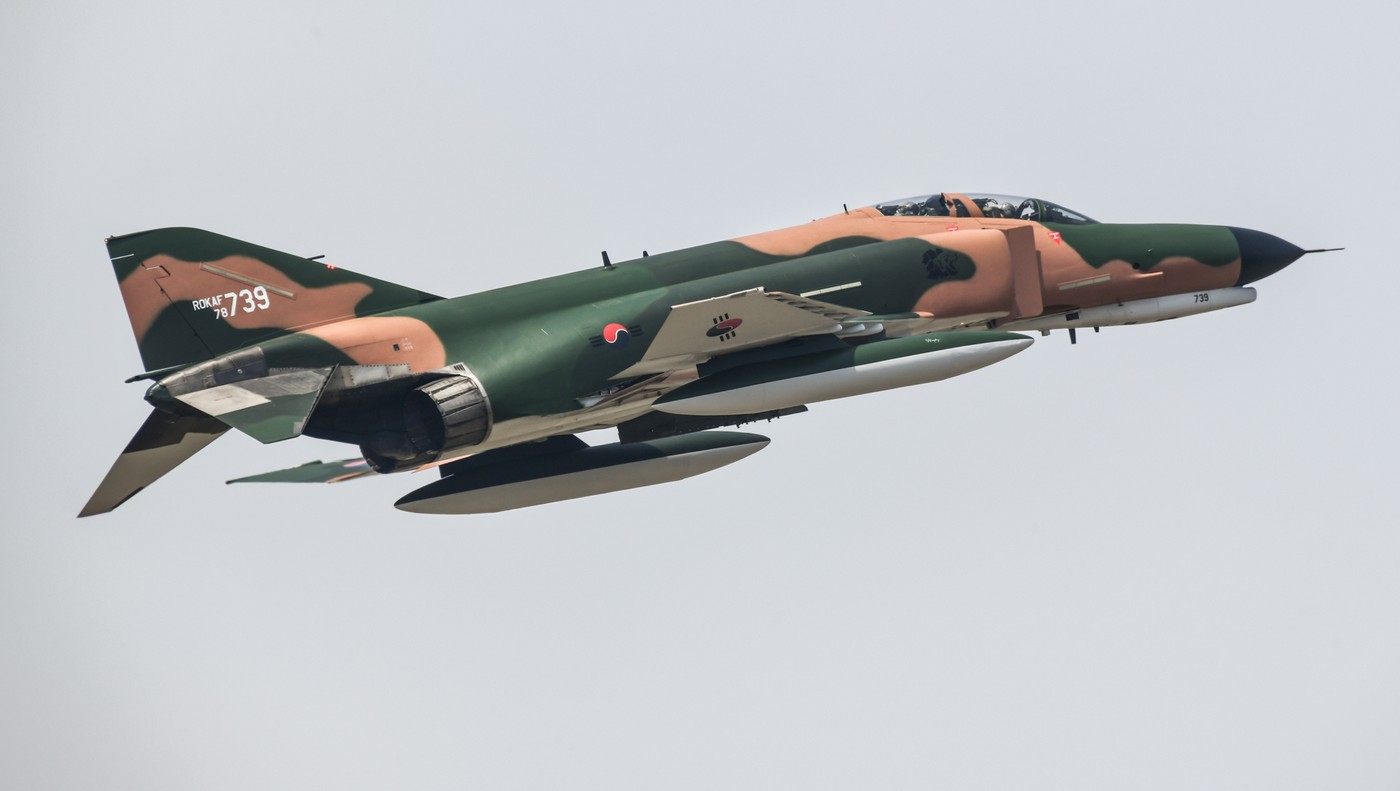
The first ROKAF Phantom squadron, the 151st Fighter Squadron, was established at Daegu on September 23, 1969. It was followed by the 152nd, 153rd, and 159th Fighter Squadrons, establishing Daegu as the primary home base for the Korean Phantoms. During the modernization of the ROKAF, South Korea introduced the F-16 in April 1986, followed by the F-15K in October 2005, and the F-35A in March 2019. During this process, South Korea phased out its F-4Ds in 2010, while the RF-4C was retired in 2014.
One of the pilots involved in bringing the first ROKAF Phantoms to Korea was retired Major General Lee Jae-woo. On June 7, he spoke at the farewell ceremony:
“My heart still beats when I think about the moment I flew with the then state-of-the-art Phantom, air refueled, and landed at Daegu base. Fifty-five years have passed since then, and it is moving to witness the Phantom’s final flight.”
Days leading up to the retirement
On June 5, two days before the farewell ceremony, the Chief of Staff of the ROKAF, Lee Young-su, visited Suwon Air Base and flew in an F-4E during one of the very last flights before his retirement, as part of a readiness inspection of key combat squadrons. The camouflaged F-4E that Lee flew, served as a Red Air asset to test the responses of other combat units. Reflecting on the impending conclusion of Phantom operations, Lee also drew attention to the current tensions with the North:
After his flight, Lee said; “the level and frequency of enemy provocations, including ballistic missile launches, GPS disruptions, and trash-laden balloons, have escalated in recent years, and we must be ready and capable to respond immediately, forcefully, and decisively to any provocation. The F-4E Phantom, serving as a symbolic representative today, will retire on June 7, 2024, but our pilots will forever carry forward the spirit of security and the aspirations of the people embodied in the Phantom.”
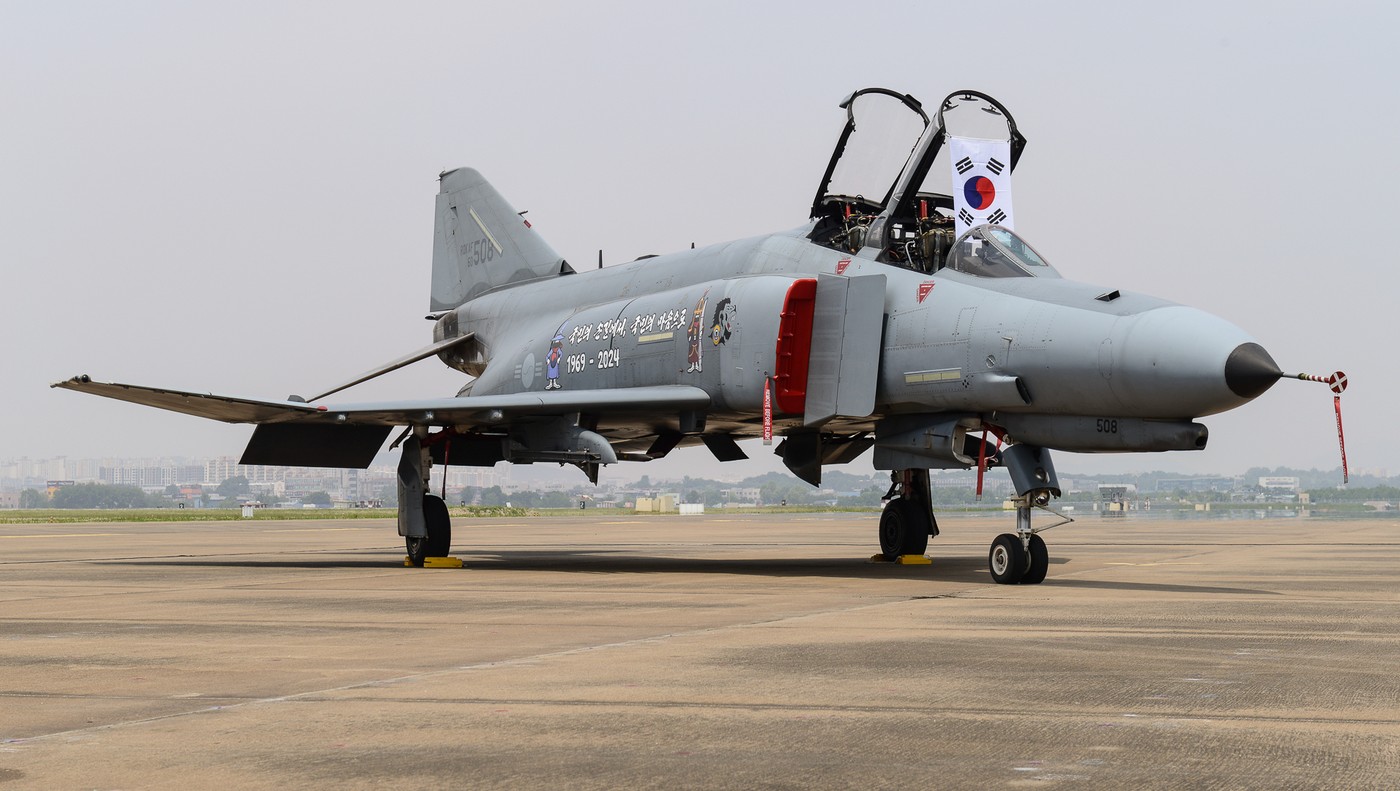
“Phantom, forever!”
The original design life of the Phantom was 4,000 hours. This has been extended by reinforcing the airframe, amongst other things. Time has however, caught up with the aircraft. Following Japan’s retirement of its F-4s in 2020, Iran remains the largest operator of the Phantom, while Greece and Turkey, both NATO members, each retain one squadron of these jets.
At the end of the ceremony, the final words went to pilot Lt. Col. Kim Tae-Hyung, commander of the 153rd Fighter Squadron, 10th Fighter Wing:
“As the last commander of the last Phantom Squadron, it has been an honor to witness the final moments of the Phantom. Though its mission has ended, the majesty that once overwhelmed the enemy and the thunderous roar that echoed through the earth will forever live on in the hearts of the ‘Phantom Men’. With unwavering pride as a Phantom pilot, I dedicate myself to steadfastly defend the Republic of Korea.”
“Phantom, forever!”
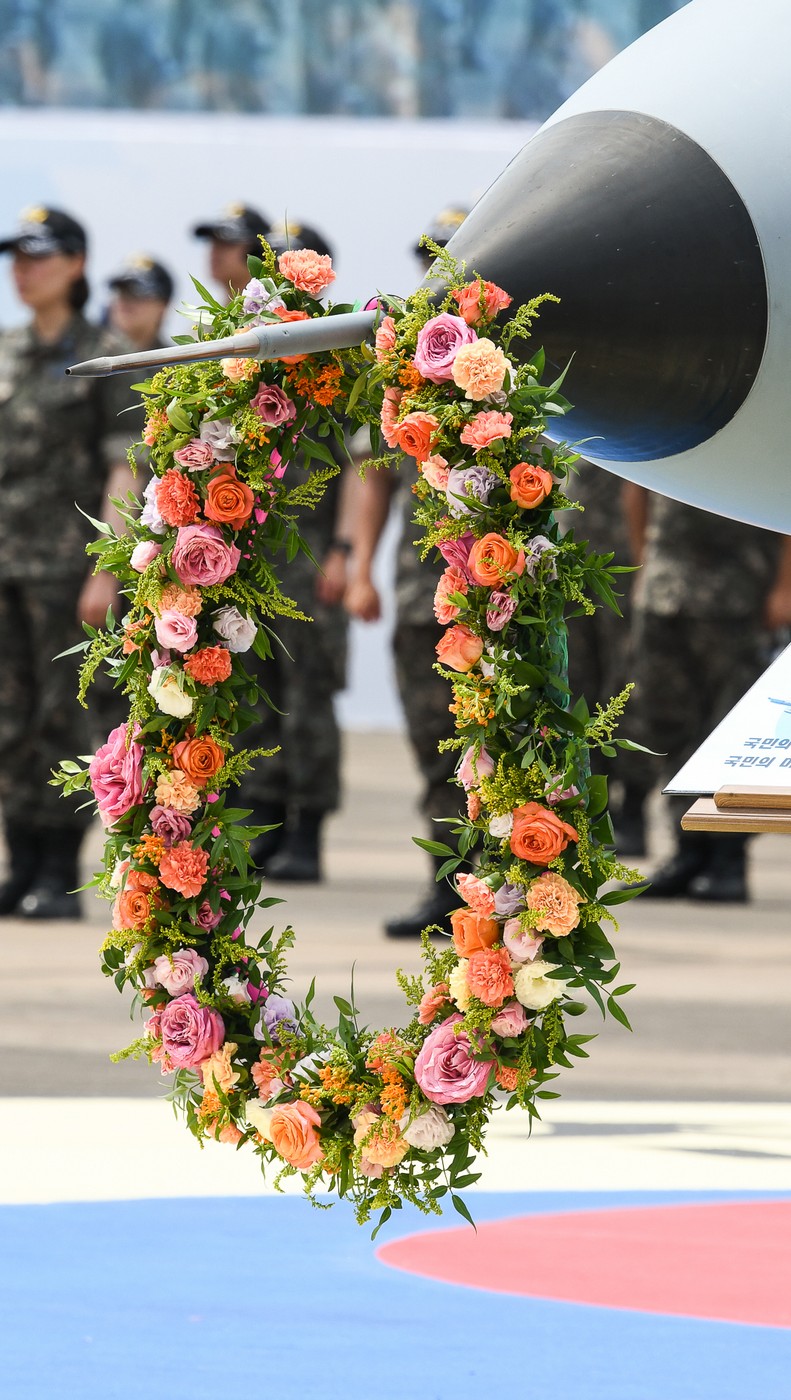
Peter van den Berg is from Coevorden, Netherlands. His love for military aviation began in 1980. The first airbase where he photographed was Soesterberg, Netherlands where the 32 TFS was stationed with the F-15. After photographing many military exercises in Europe over the years, Peter decided to spend the last 15 years visiting Asia and the USA. He regularly writes books for Veldhuis Media Group. Peter has written books about NAS Fallon, Red Flag and the Japanese Airforce.
In addition to publishing books, Peter is working as a teacher for senior secondary vocational education.
Peter uses Nikon equipment.
Peter can be reached at: [email protected]

